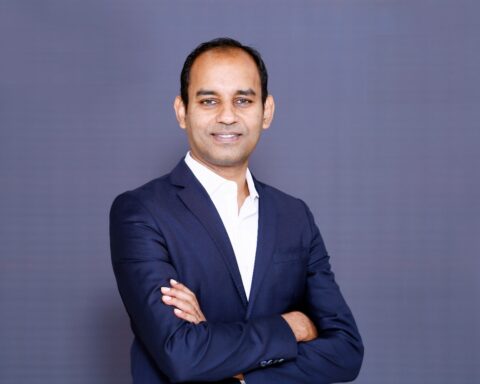Here’s the interview snippet from the interaction with Mr. Manivannan Arulalan, Vice President at Qualitest.
Saumya: Give us an overview of Qualitest and its journey so far?
Manivannan: The world’s leading AI-powered quality engineering firm, Qualitest is instrumental in facilitating seamless transition of brands through every stage of their respective digital assurance journey. Whether it’s about moving beyond functional testing to adopting innovations such as automation, AI, crowd sourced UX testing (usability testing), accessibility and more, we have carved a niche as support pillars for modern-day brands.
The firm offers a wide range of personalised testing and quality engineering solutions that leverage deep, industry specific understanding for a variety of sectors, including banking and financial services, technology, media & communications, healthcare and life-sciences, retail & consumer goods, and energy & utilities.
A cutting-edge company, Qualitest provides scalable business quality engineering solutions that protect brands through end-to-end value demonstration with a focus on customer experience and release velocity.
Saumya: How is technology transforming from Digital Banking to Neo-Banks and the role of Digital assurance can help to create superior customer experience?
Manivannan: Digitisation, having influenced almost all industrial gamut, remains at the forefront when it comes to reshaping the banking and financial services ecosystem in India. From the introduction of the biometric Aadhar Card to the Unified Payments Interface (UPI), the Indian financial landscape has witnessed an unprecedented digital disruption. As modern-day firms embrace their digital transformation, digital banking and the growth of Neo-banks are paving the way forward, breaking away from archaic practices and giving stiff competition to traditional financial institutions.
With the changing customer preferences and demand for better accessibility, Neo-Banks are offering personalised services at the behest of new-age technologies. They leverage the mobile-first model to differentiate themselves by introducing innovative products and providing superior customer service.
And, with the growing dependency on mobile devices, Neo-Banks will continue to rely on innovation to bridge the gap between the services that traditional banks offer and the evolving expectations of customers in the digital age.
Saumya: How can data drive Hyper-Personalization from customer cloud infrastructure given the data & privacy regulations?
Manivannan: Hyper personalization is achieved by capturing and analyzing user behavior and user data; this is often achieved at the cost of user privacy. With the introduction of general data protection regulation (GDPR), websites and apps are now required to ask users for explicit consent on the type of cookies and the user data that applications can capture. Customers and end-users also have the power to limit the usage of background data collection – the option of sharing data ‘only while using the app’ is a case in point.
There are multiple layers to data and privacy regulations. For example, governments in some countries have put stringent restrictions on third party retailers and vendors retaining customer credit and debit card information. Apple’s new IoS updates have a sharp focus on user privacy; some social media giants are no longer able to track user data from IoS devices and have seen a sharp dip in active users and their stock prices.
To drive hyper personalization in the age of cloud-native applications and solutions, enterprises must design their customer engagement strategies around privacy and data regulations. Within the framework of these regulations, enterprises must identify opportunities to capture and process user data with due consent. Enterprises that seek to engage their customers through hyper personalization must now invest additional efforts to attract and retain user trust. This can be achieved by giving users the ability to control how much of their data can be tracked, during what times; users can also be provided an option to opt out of data tracking – this in turn can reduce the ‘risk to privacy’ that concerns most users. With the dual limitations of government/local regulation and software privacy settings/ user consent requirements, enterprises must come to terms with the fact that there will be a dip in the available customer behavior data. Companies must apply advanced analytics and artificial intelligence (AI) to derive more insights from this reduced volume of user data.
Saumya: How digital payments are reshaping with emerging new business models in the Banking Financial landscape?
Manivannan: In the modern era of digitisation, secure payment gateways, scan and pay QRs, and unified payment interface (UPI) have made digital payments faster than ever before. Blockchain-based options like Ethereum and Bitcoin have gained ground as financial instruments. Non-fungible tokens (NFTs) have entered the realm of speculative assets and windfall gains. The change in technology and consumer behaviour has reshaped the financial landscape with traditional players like banks and insurers now embracing digital transformation.
Today, the digital-only players are using non-linear and dynamic business models to cope with both the ever changing market needs and customer preferences. When it comes to financial technology service providers, the surge in digital payments has improved speed, security and accuracy of communication between multiple payment service provider applications. On the other hand, payment gateways and aggregators are providing value-added services such as customer support and loyalty discounts to end customers. They also offer attractive pricing for international transactions involving multiple currencies, the option is availed by a surging population of people who remit money to their home country. Digital disruption is altering the way services are delivered in the sector but it is also addressing some of the industry’s previous issues such as high switching costs, transparency and transaction costs.
Saumya: What are your plans for expansion? Top priorities for 2022-2023?
Manivannan: Qualitest, currently, has operations in the US, UK, India, Israel, Germany, Romania, Argentina, Mexico, and Portugal, and serves over 250 blue-chip customers worldwide. Commencing operations in 2019 in India, Qualiest has its centres in Bengaluru, Noida, Hyderabad and recently announced the opening of a new facility in Chennai, which is a vital part of our strategic expansion plan across India.
We continue to experience rapid growth, including the acquisition of four multinational tech companies within the past two years. Bolstered by more than 7,000 engineers, Qualitest has assembled one of the largest, most talented groups of creative, critical problem-solvers in the world. Adding to our growth trajectory, we also have plans to ramp up our global workforce to 10,000 in the next 18 months.
More recently, we’ve announced hiring for 1,000-entry-level and 2,000 experienced professionals across multiple regions in key verticals such as gaming and technology, banking and financial services, retail, media and entertainment, healthcare, life sciences, blockchain and internet of things (IoT) among others. These positions are open throughout Qualitest’s worldwide hubs in the United States, Great Britain, Germany, Romania, India, Israel and others with the option to work fully remote.






